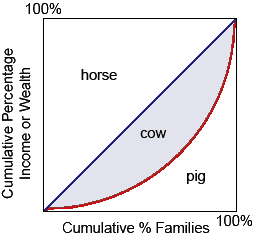The ratio of the area between the perfect equality reference line and the Lorenz curve is the: (w) Gini index. (x) relative income (y) poverty line (z) marginal productivity standard.

Please choose the right answer from above...I want your suggestion for the same.